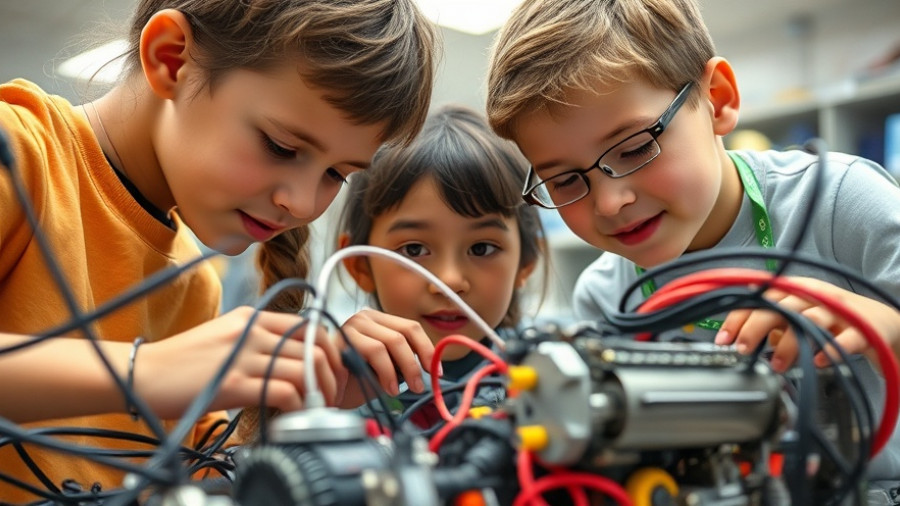
How AI Is Transforming STEM Education for the Next Generation
As artificial intelligence rapidly changes the landscape of technology, its impact on STEM (Science, Technology, Engineering, and Mathematics) education is profound. Once viewed as a clear pathway to stable careers, computer science is now pivoting to a more diverse curriculum, prioritizing data literacy alongside traditional coding skills.
The Shift From Coding to Data Literacy
In the early 2010s, aspiring tech students received one primary advice: 'Learn to code.' Fast forward to 2025, and the narrative in classrooms is evolving. Benjamin Rubenstein, an assistant principal at New York’s Manhattan Village Academy, notes that students are moving away from the conventional coding focus to exploring statistics and data analysis. This shift highlights the importance of interpreting data—a skill AI has not completely mastered yet.
The change is evident not just in curriculum choices but also in the nature of skills honed by students. Statistics-focused classes are soaring in popularity, evidenced by a significant surge in AP Statistics exam registrations. This trend indicates a growing appetite among students to acquire practical skills that blend computation with real-world analysis.
AI as a Classroom Ally
Even though there's a fear that AI might replace human jobs, educators view AI as a tool to enhance teaching rather than to replace it. Rubenstein envisions classrooms where AI algorithms can help teachers gauge student understanding, refine lesson plans, and even suggest personalized projects based on student interest. Such methodologies transform the traditional teaching model, ensuring that students learn how to navigate and utilize AI effectively while still engaged in the learning process.
Preparing Students for a New Job Market
The implications of AI on the job market cannot be overlooked. Many traditional jobs in tech are being automated, leading educators to prepare students for new roles that demand a combination of technical prowess and analytical skills. Xiaoming Zhai of the University of Georgia champions the integration of AI into classroom dynamics, advocating for a curriculum that fosters creativity, critical thinking, and collaboration between human intelligence and AI.
The Challenges and Responsibilities of AI in Education
While the potential benefits of AI in education are vast, they come with ethical dilemmas. Concerns about bias in AI algorithms, privacy of student data, and the accountability of automated systems have raised questions about how to integrate AI responsibly in classrooms. It’s crucial for educators and administrators alike to approach AI in education thoughtfully, ensuring that students receive a well-rounded experience.
Embracing a Comprehensive STEM Curriculum
The balancing act between technology and ethics will define the educational framework for future generations. Current students are encouraged to embrace interdisciplinary thinking, combining insights from multiple subjects to make informed decisions. Rubenstein aptly noted, 'Students can’t think of things as compartmentalized anymore.' This holistic approach ensures students are versatile and prepared for various career paths that will meld technology with human touch.
Conclusion: Fostering Future-Ready Students
The changes in STEM education are not just about replacing coding with statistics; they are about creating a future where students can leverage technology responsibly. As AI becomes more integrated into the fabric of education, it is clear that understanding it goes beyond technical competence. Students must be encouraged to engage critically with AI, ensuring they can navigate a landscape that is ever-evolving.
As entrepreneurial ventures and innovative businesses continue to emerge, fostering a generation of students who are not just tech-savvy, but also ethically aware, is essential. Schools must prioritize AI literacy, ensuring students are not just passive consumers of technology but active, informed participants in shaping the future. The call for action is clear: educators, parents, and industry leaders must collaborate to create an immersive educational environment that prepares students for the challenges and opportunities presented by AI.
 Add Row
Add Row  Add
Add 




Write A Comment